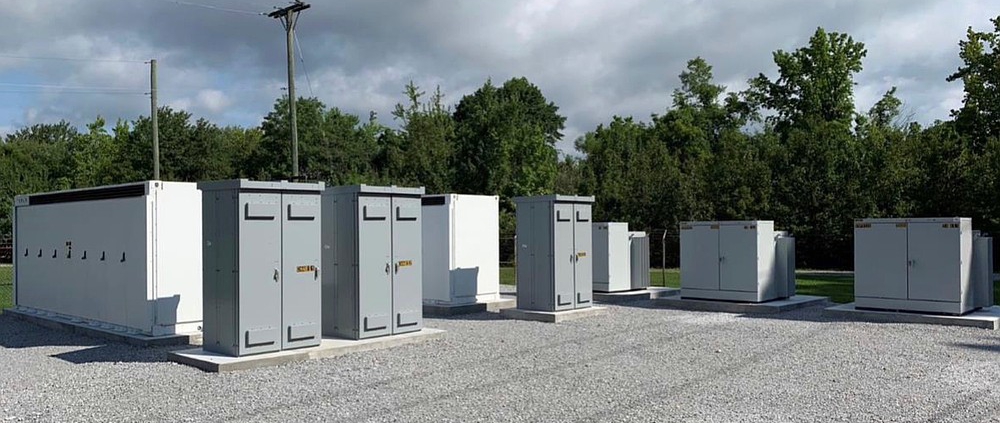Industrial Energy Storage Solutions: Strategies, Applications, and Vendor Insights
Introduction
As industrial sectors face increasing pressure to reduce carbon emissions, stabilize energy costs, and enhance operational resilience, industrial energy storage systems (IESS) have become indispensable assets. Beyond serving as backup power, these systems optimize energy management, improve operational efficiency, and support sustainability goals.
This article takes a practical perspective, focusing on vendor selection, lifecycle management, and cross-industry applications—providing insights not typically covered in standard case studies.
What Makes a System “Industrial”?
Industrial energy storage systems differ from residential and commercial solutions in three key aspects: scale, integration complexity, and performance demands. While residential systems rarely exceed 50 kW, IESS typically ranges from hundreds of kilowatts to multi-megawatt capacities. Key characteristics include:
- High cycle durability for daily heavy-duty operation
- Grid interaction capabilities, such as peak shaving, frequency regulation, and load balancing
- Integration with facility control systems (e.g., SCADA, PLCs)
- Advanced safety protocols and regulatory compliance
Modern industrial systems are engineered to function not only as backup power but as strategic energy assets, optimizing facility-wide electricity consumption and operational costs.
Core Components of Industrial Energy Storage Systems
Industrial energy storage systems are complex integrations of hardware and software, designed for reliability and efficiency:
- Battery Modules
Lithium Iron Phosphate (LiFePO₄) is the most common chemistry due to its safety, long cycle life, and thermal stability. Other chemistries, including flow batteries and emerging sodium-ion solutions, are being evaluated for long-duration storage applications. - Battery Management Systems (BMS)
The BMS monitors cell voltage, current, temperature, and state of health (SOH) while ensuring safe and efficient operation. Advanced BMS also provide predictive maintenance alerts and cybersecurity protocols. - Power Conversion Systems (PCS)
PCS units manage bidirectional energy flow between the batteries and facility loads, supporting both grid-tied and islanded operation with minimal power losses. - Energy Management Systems (EMS)
AI-enabled EMS platforms optimize charge/discharge schedules, coordinate renewable integration, and automate participation in grid services, such as demand response or frequency regulation. - Thermal Management
Air-cooled outdoor cabinets provide cost-effective, modular deployment for industrial environments. For example, LEOCH’s Outdoor Cabinet Air-Cooling Energy Storage System combines reliability and ease of installation, making it ideal for mid- to large-scale industrial deployments.
US Lithium Battery Manufacturers and Supply Chain Insights
Selecting the right battery supplier is crucial for industrial storage deployments. US lithium battery manufacturers provide advantages such as:
- Shorter delivery times and stronger local support
- Compliance with domestic safety and regulatory standards
- Improved integration with modular industrial energy systems
When evaluating vendors, businesses should assess product quality, service responsiveness, compatibility with existing infrastructure, and long-term reliability.
Cross-Industry Applications
Industrial energy storage is not one-size-fits-all. Deployment strategies vary depending on industry requirements:
- Manufacturing Plants: Peak shaving, load leveling, and power quality stabilization.
- Data Centers: Uninterruptible power supply (UPS) with frequency regulation participation.
- Warehousing and Logistics: Backup power for automated systems and refrigeration, energy arbitrage with time-of-use tariffs.
- Retail Chains: Distributed storage to optimize energy use across multiple locations.
- Remote Sites & Microgrids: Mining or rural operations benefit from hybrid systems integrating PV, wind, or diesel backup.
Each application demands tailored system sizing, control logic, and maintenance strategies.
Lifecycle Management and End-of-Life Considerations
Industrial energy storage should be evaluated not only for initial performance but also for full lifecycle management:
- Predictive Maintenance: Monitoring state-of-health and scheduling proactive maintenance reduces downtime.
- Second-Life Applications: Retired batteries can be repurposed for lower-demand scenarios, such as grid services or EV charging.
- ESG and Carbon Accounting: Integrating lifecycle data into sustainability reporting ensures measurable environmental benefits.
Technology Trends and Innovations
- AI-Driven EMS: Smart dispatch algorithms for load forecasting, predictive maintenance, and real-time grid interaction.
- Modular & Scalable Systems: Rack-based or containerized designs enable capacity expansion without large-scale retrofits.
- Hybrid Energy Integration: Coupling storage with solar, wind, or backup generators optimizes cost and emissions.
- DC-Coupled Architectures: Reduce conversion losses and improve system efficiency for large PV-integrated industrial sites.
Economic and Investment Considerations
- Capital Expenditure (CAPEX): Upfront costs remain significant, but modular designs reduce over-sizing risks.
- Operational Savings: Demand charge reduction, peak shaving, and participation in grid services provide measurable ROI.
- Industry-Specific ROI: Manufacturing facilities may benefit most from load leveling, while data centers gain reliability and grid revenue.
- Policy Incentives: Federal and state programs, tax credits, and rebates enhance the financial feasibility of IESS adoption.
Guidelines for Selecting and Deploying IESS
- Define Operational Goals: Backup duration, load profile, and scalability requirements.
- Choose Suppliers Wisely: Local manufacturers may offer faster service and tailored solutions.
- Select Appropriate Architecture: Modular, containerized, or centralized solutions based on space, power needs, and maintenance capabilities.
- Plan Maintenance & Monitoring: Implement real-time dashboards, predictive analytics, and preventative maintenance schedules.
Conclusion
Industrial energy storage systems are strategic assets that extend beyond simple backup power. By carefully selecting the right supplier, integrating AI-enabled EMS, and planning for full lifecycle management, businesses can achieve cost optimization, operational resilience, and sustainability objectives.
For organizations seeking practical guidance and proven solutions:
- Explore real-world applications: Use Cases of Commercial and Industrial Energy Storage Systems
- Learn what sets high-quality systems apart: High-Quality Industrial Energy Storage Systems: What Sets Them Apart
Industrial energy storage is no longer optional—it’s an investment in reliability, efficiency, and a cleaner energy future.


